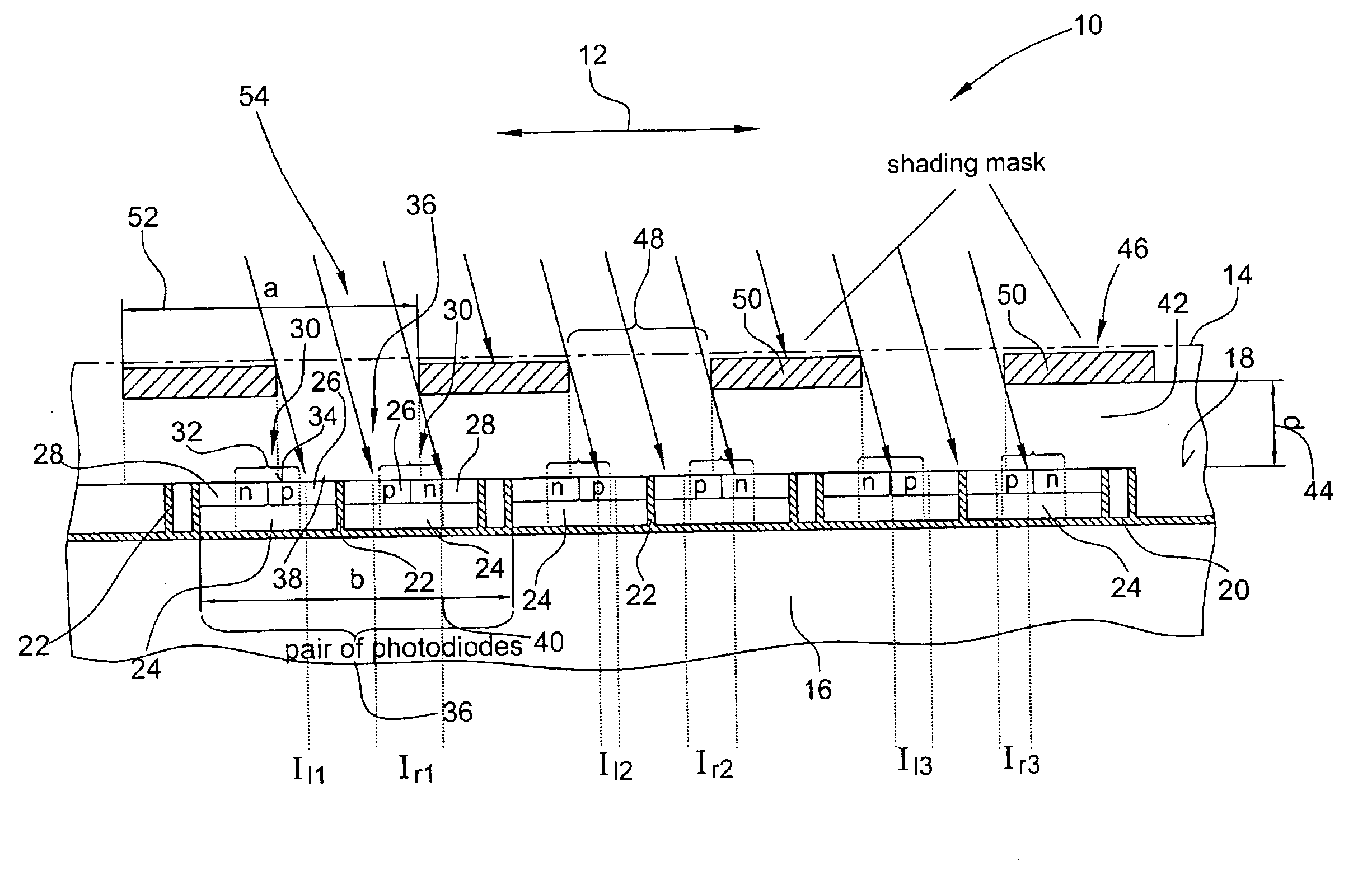Device for detecting the angle of incidence of radiation on a radiation incidence surface
a radiation incidence surface and radiation detection technology, applied in the direction of optical radiation measurement, radiation control devices, instruments for comonautical navigation, etc., can solve the problems of optical disturbance and incidence angl
- Summary
- Abstract
- Description
- Claims
- Application Information
AI Technical Summary
Benefits of technology
Problems solved by technology
Method used
Image
Examples
Embodiment Construction
FIGS. 1 to 3 illustrate the basic configuration of a device 10 for detecting the angle of incidence of that component of a radiation which impinges onto a radiation incidence surface 14 along the axis marked by the twin arrow 12. Device 10 comprises a semiconductor substrate 16 which in the present case is provided as a SOI substrate and includes a horizontal insulating layer 20 extending below the surface 18 of substrate 16. Formed in the surface 18 of substrate 16 are vertical insulating trenches 22 so that the surface 18 of substrate 16 is provided with individual areas 24 dielectrically insulated from each other. In each of these areas 24, a p-doped region 26 and an n-doped region 28 of a photodiode 30 are inserted. Each photodiode 30 comprises a space-charge zone 32 having a space-charge zone face 34 arranged in the surface 18 of substrate 16.
Respectively two adjacent photodiodes 30 are connected to each other to form a pair 36 of photodiodes (not shown). The p- and n-regions 2...
PUM
 Login to View More
Login to View More Abstract
Description
Claims
Application Information
 Login to View More
Login to View More - R&D
- Intellectual Property
- Life Sciences
- Materials
- Tech Scout
- Unparalleled Data Quality
- Higher Quality Content
- 60% Fewer Hallucinations
Browse by: Latest US Patents, China's latest patents, Technical Efficacy Thesaurus, Application Domain, Technology Topic, Popular Technical Reports.
© 2025 PatSnap. All rights reserved.Legal|Privacy policy|Modern Slavery Act Transparency Statement|Sitemap|About US| Contact US: help@patsnap.com



